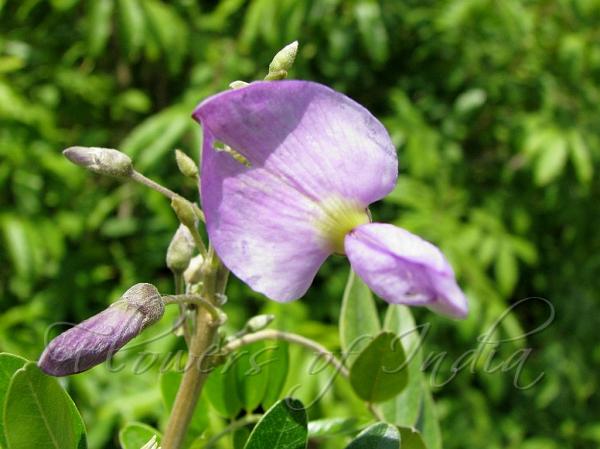|
| Cork Bush |
|

|

| File size | 115499 |
| Original date | 10/15/11 12:13 PM |
| Resolution | 1024 x 768 |
| Flash | Flash did not fire, auto |
| Focal length | 6.0mm |
| Exposure time | 1/800s |
| Aperture | 4.0 |
| Focus Distance | |
| Metering Mode | Center weighted average |
| Camera make | Canon |
| Camera model | Canon PowerShot S5 IS |
| Sensor type | OneChipColorArea |
|
|
|
|
Photo: |
Botanical name: Mundulea sericea Family: Fabaceae (Pea family)
Synonyms: Tephrosia sericea, Robinia suberosa, Dalbergia sericea
Synonyms: Tephrosia sericea, Robinia suberosa, Dalbergia sericea
Cork Bush is an attractive virgately branched shrub
or a graceful small tree 0.5-7.5 m tall, usually single-stemmed with a
bushy, much-branched crown. Bark, stem and branches are pale, corky and
deeply furrowed-a fine contrast to the delicate silver-grey to light
green foliage. Plants growing in an evergreen habitat, devoid of fire,
are usually tall, single-stemmed trees with a greenish yellow and
smooth bark with almost imperceptible longitudinal fissures. They are
strikingly different from the more frequently encountered form from
whence the English common name, cork bush, is derived. Young branches
are tough and pliant. Leaves are alternate, compound, covered with
silky silver hairs, 8-10 cm long, with 4-10 pairs of leaflets with an
additional terminal leaflet, all about 1.3 cm long, oval to
lance-shaped, pale green. The flowers are showy and pea-like, carried
in terminal clusters in a rich violet, mauve and lilac or even white.
The fruit are pods, about 10 cm long and narrow, with thickened
yellow-brown rims, becoming brown-grey as they mature, velvety hairy
and may persist on the branches throughout winter. Each pod contains
1-11 brownish-green, kidney-shaped seeds. The wood is light yellow,
tough, and hard and produces a strong, unpleasant scent when worked.
Cork Bush is found in South Africa, north to tropical Africa, and east
to Madagascar, India, Sri Lanka and Papua New Guinea.
| Identification credit: Shrikant Ingalhalikar | Photographed in Belgaum, Karanataka. |
• Is this flower misidentified? If yes,